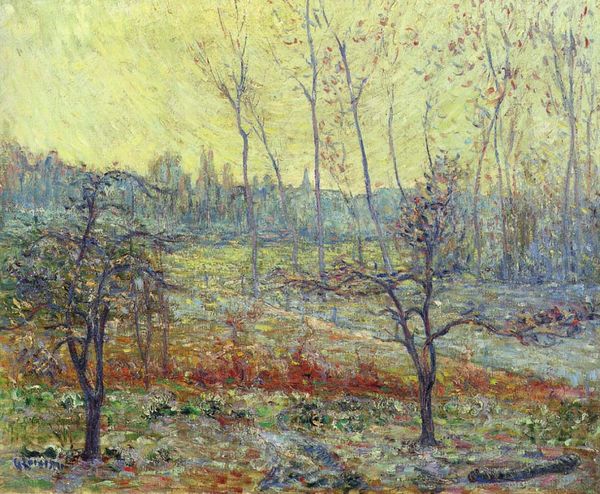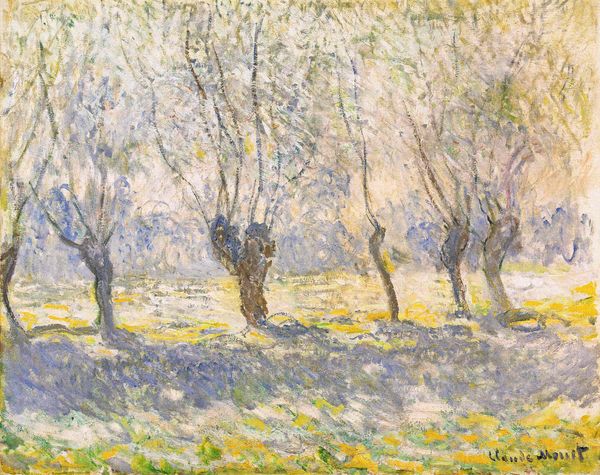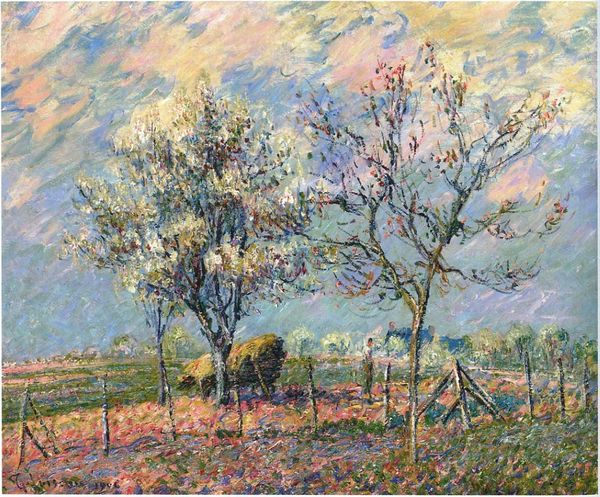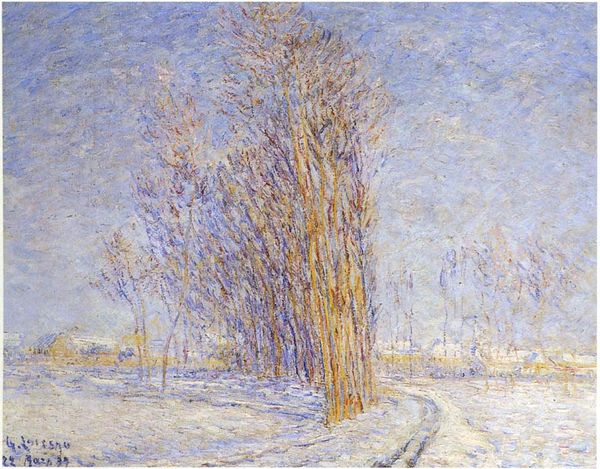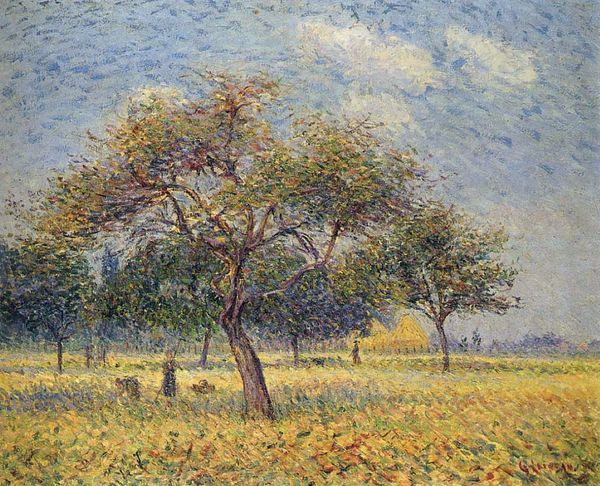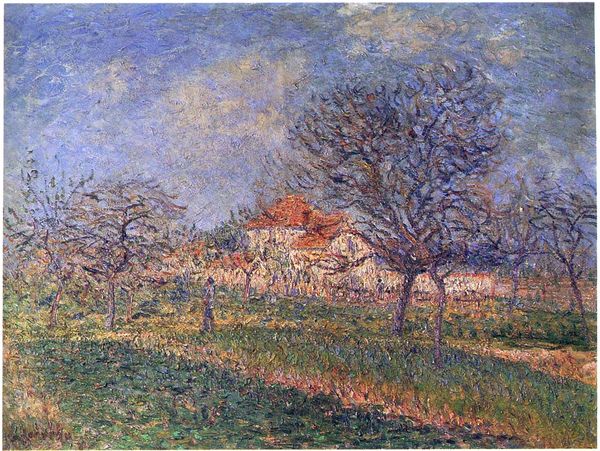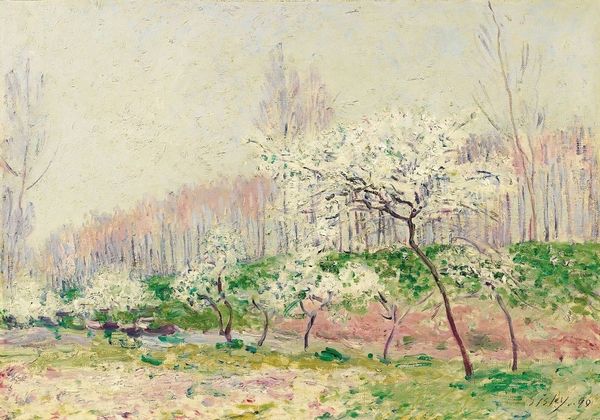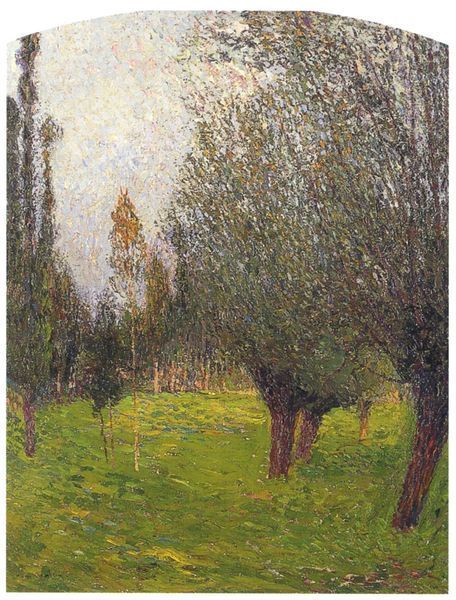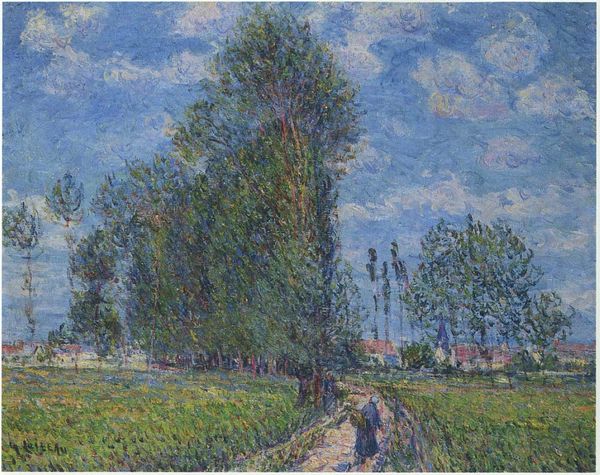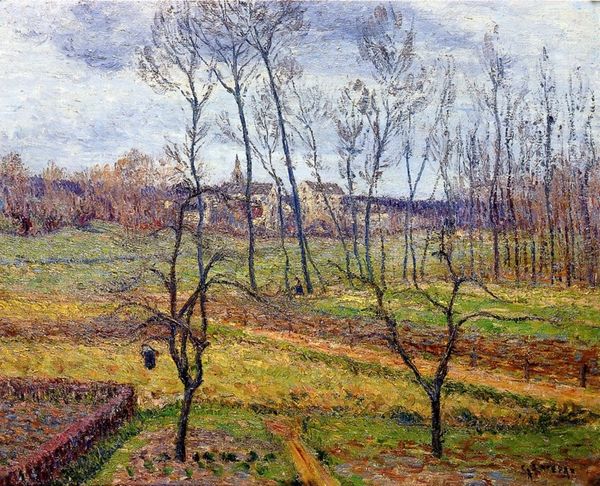
Copyright: Public domain
Curator: Just looking at this painting, "Near Saint Cyr" by Gustave Loiseau, done in 1895 with oil on canvas, evokes such a bleak and lonely feeling. All those grays and blues… it's almost like winter's sigh made visible. Editor: Absolutely, there's a certain quiet oppression. It's not aggressive, but a subtle dominance of the environment over everything – even the little red-roofed houses seem to shrink back. It reminds me how marginalized communities often find their own voices stifled within larger societal structures. Curator: Loiseau was working within the Impressionist movement, very dedicated to "plein-air" painting. How do you think painting outdoors affects the way artists depict scenes like this, the area around Saint Cyr? Editor: Being outdoors connects you to the immediate reality—you can't romanticize it, not when you’re experiencing it firsthand. Loiseau is engaging directly with that cold reality, but then he translates it through an individual artistic lens, which adds layers of meaning, and exposes, perhaps unconsciously, a feeling of alienation between modern life and landscape, where land gets appropriated and owned. The systematic process of painting "en plein air," which sounds apolitical at first glance, embodies this relationship with territory. Curator: Right, there’s a tension in his commitment to portraying what’s there while using techniques to communicate his particular interpretation. The strokes create a soft haziness, which almost blurs the individual elements, softening any specific geometries we see. He almost veils what we think we see, creating new questions about place and belonging. It makes me wonder, how might we use art as activism now? Editor: Art can indeed reclaim narratives. In Loiseau's case, what choices was he making about what to reveal, what to obscure? Art challenges accepted power dynamics; for me, this artwork resonates within an awareness of socio-political circumstances and their reverberations across social hierarchies. Ultimately, Loiseau seems to have composed a poignant question about humanity’s footprint. Curator: Yes, absolutely—I'm looking at those thin bare trees again; a visual elegy to land transformed into something… less itself? I think art has to be in conversation with society and power dynamics to resonate meaningfully across time. Editor: It's precisely that haunting stillness, an invitation into uncomfortable reflections that stays with us.
Comments
No comments
Be the first to comment and join the conversation on the ultimate creative platform.

